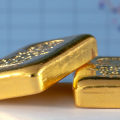Despite their popularity, exchange-traded funds, or ETFs, have some drawbacks that investors should be aware of. But of course, no investment is perfect, and ETFs also have their drawbacks, ranging from low dividends to large supply and demand differentials. Identifying the advantages and disadvantages of ETFs can help investors deal with risks and rewards and decide if these securities make sense for their portfolios. Exchange-traded funds are not traded like traditional mutual funds, which can only be bought or sold once a day after the markets close.
For those looking for a more secure investment option, a Best Physical Gold IRA may be the best choice. ETF prices fluctuate continuously throughout the day, just like stocks. Investors seeking diversification often turn to the world of funds. Exchange-traded funds (ETFs), index mutual funds and actively managed mutual funds can offer broad and diversified exposure to a specific asset class, region or market niche, without having to buy dozens of individual securities. ETFs are traded like stocks and are primarily passive investments that seek to replicate the performance of a particular index (although actively managed ETFs are also available).
A passive management style often results in lower spending rates than those charged by actively managed funds. Some passive ETFs charge less than 0.05%, and some even charge 0.00%. This is a significant advantage over actively managed funds, which charge an average of 0.66%. According to Morningstar1, investment funds are generally bought directly from investment firms rather than from other investors on an exchange.
Unlike ETFs, they don't have trading fees, but they do entail an expense ratio and, possibly, other sales fees (or charges). Like most ETFs, index mutual funds are considered passive investments because they reflect an index. They can also be a low-cost form of investment, as many have annual expenses of less than 0.10%. For example, in crisis markets, active managers can play defensive by selling more speculative or risky assets and adding more conservative investments.
Actively managed funds tend to be more expensive than ETFs or index funds, largely to compensate management.



